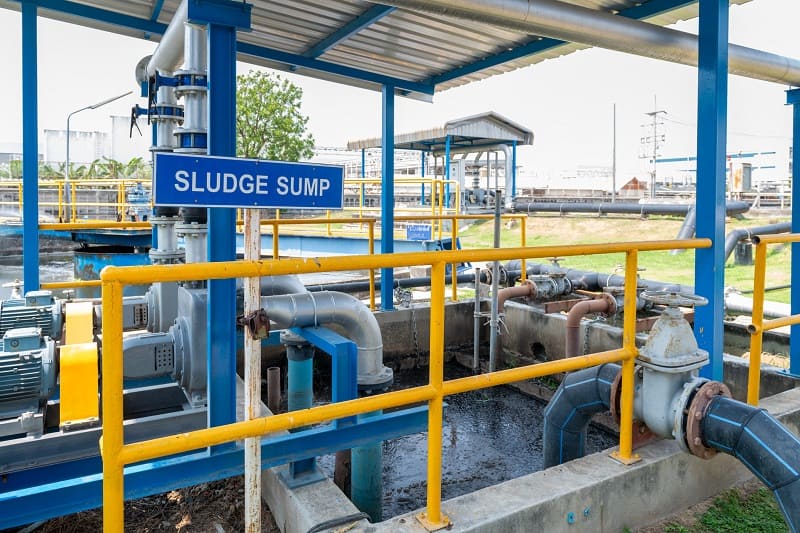For industrial facilities utilizing pits, sumps, and trenches, conducting regular inspections and proper maintenance is non-negotiable. Often used for containment or drainage, as well as utility routing, pits, sumps, and trenches are typically located below floor level or underground. These critical infrastructure spaces can present unique hazards. These hazards must be mitigated or prevented for the safety of the crew and the environment. Neglecting these structures can result in significant risks to life, safety, and the environment, making it worthwhile and necessary to remain vigilant about their condition.
Structural and Hazardous Risks of Neglect
Neglecting sumps, pits, and trenches in industrial facilities can spell disaster for the project and the crew. By maintaining safety, your facility can avoid costly fines, legal liabilities, and, most importantly, compromising the safety of your employees. Pits, sumps, and trenches should be inspected routinely, repaired or maintained as needed to maintain integrity, and regarded just as highly with respect to safety as dangerous, hazardous equipment. Structural and hazardous risks include structural deterioration, blockages and overflows, as well as contamination or other environmental hazards.
Structural Deterioration
Since the structure of a pit, sump, or trench is typically built using the earth, industrial facilities must take extra precautions to ensure that there is no structural deterioration. The structural integrity can change over time, resulting in unstable walls, cracking, and corrosion, which can lead to collapse. Not only that, but water infiltration and flooding can also lead to soil erosion, which impacts the structure. If the structural integrity of the walls is compromised to the point of collapse, endangering lives and valuable equipment, it underscores the importance of maintaining the structural integrity of the pit, sump, or trench.
Blockages and Overflows
Sumps, pits, and trenches that are not maintained could be subject to a buildup of debris, sludge, or other contaminants, especially after a significant rainfall or accidental spill. If not properly maintained, this accumulation could lead to hazardous flooding, damage to equipment, and compromise the integrity of the trench, pit, or sump. Damaged equipment could result in shutting down the job site, which is something no industrial facilities want to endure. Depending on what is built up, this could also pose environmental hazards that could result in fines and legal liability.
Contamination and Environmental Hazards
When the structural integrity is compromised or deteriorated and/or blockages or overflows occur, the risk is high for leaks, spills, or floods to reach groundwater or stormwater systems. This could pose significant contamination risks that could take years to rectify — if it can be rectified at all. This could result in noncompliance with environmental laws and regulations, leading to lawsuits, fines, and other penalties for industrial facilities, some of which may be unrecoverable.
Safety Risks to Industrial Facilities Personnel
In addition to risking the integrity of the pit, sump, or trench itself, neglecting proper inspection and maintenance can result in significant safety risks to personnel in industrial facilities. This includes slip, trip, and fall hazards, toxic exposure, and dangerous working conditions that could result in significant injury or death. Additionally, failing to maintain these structures makes working in them incredibly hazardous, as the confined spaces are not only risky to enter but also pose additional risks for rescue teams in the event a rescue is needed, further increasing the danger.
Slip, Trip, and Fall Hazards
Poorly maintained, uncovered, or spaces with improper visibility or signage can result in physical dangers. Workers could trip, slip, or fall, which might be insignificant or could result in a serious injury or worse. Industrial facilities should strive to eliminate these hazards on the jobsite.
Toxic Exposure
Another safety risk to crews working in pits, sumps, and trenches in industrial facilities is exposure to toxic substances. This can occur in cases where chemicals that should be removed build up and release poisonous gases, which can then result in fires, explosions, or even harm or kill crews. Toxic exposure is an earnest consideration for these structures, so industrial facilities must pay particular attention to this threat. Additionally, sludge buildup or stagnant water can create other hazardous waste, impacting groundwater or sewer systems.
Legal, Regulatory, and Financial Concerns
Industrial facilities must continually stay up-to-date with regulatory compliance, which encompasses environmental, legal, and financial requirements. These regulations are often subject to change, particularly with the evolution of regulatory attitudes, new scientific research, and public pressure. Failing to consider these factors could spell disaster for the business, potentially jeopardizing its survival if found to be noncompliant.
Some regulatory bodies that industrial facilities must comply with include those established by the EPA (both state and federal), local regulations and codes, OSHA, and other industry-specific regulatory agencies. By staying current with these regulations, industrial facilities can avoid legal liabilities, unplanned shutdowns, life and safety hazards, equipment failure, and the associated costs of facility degradation and equipment replacement.
Best Practices for Inspection and Maintenance at Industrial Facilities

Industrial facilities should follow industry-specific best practices for maintaining and inspecting pits, sumps, and trenches. This includes routine inspections, at a minimum, every month; however, some circumstances may require more frequent inspections. Regular cleanouts of sumps, pits, and trenches, as well as scheduled maintenance turnarounds for cleaning, debris removal, repairs, and upgrades, should be a standard strictly adhered to. Finally, industrial practices must maintain a record and proper documentation of inspections, all maintenance, including replacements, and the timing of turnarounds, as well as an evaluation of their success to ensure compliance and effective operation.
Evaluate Your Industrial Facility’s Risk
Whether your industrial facility has sumps, pits, or trenches, it is essential to identify any risks, remedy hazards, and keep things operating smoothly, in compliance, and profitably. Neglecting proper maintenance can result in disaster, both personally and ecologically, as well as legally and financially. It can also potentially lead to irreparable damage to the business, making it foolish not to do so. If you need help understanding hidden risks at your industrial facility, whether it is in pits, sumps, or trenches, or another part of your facility, Environmental Remedies can help! Request a free quote today to see how you can improve your facility’s operations!






